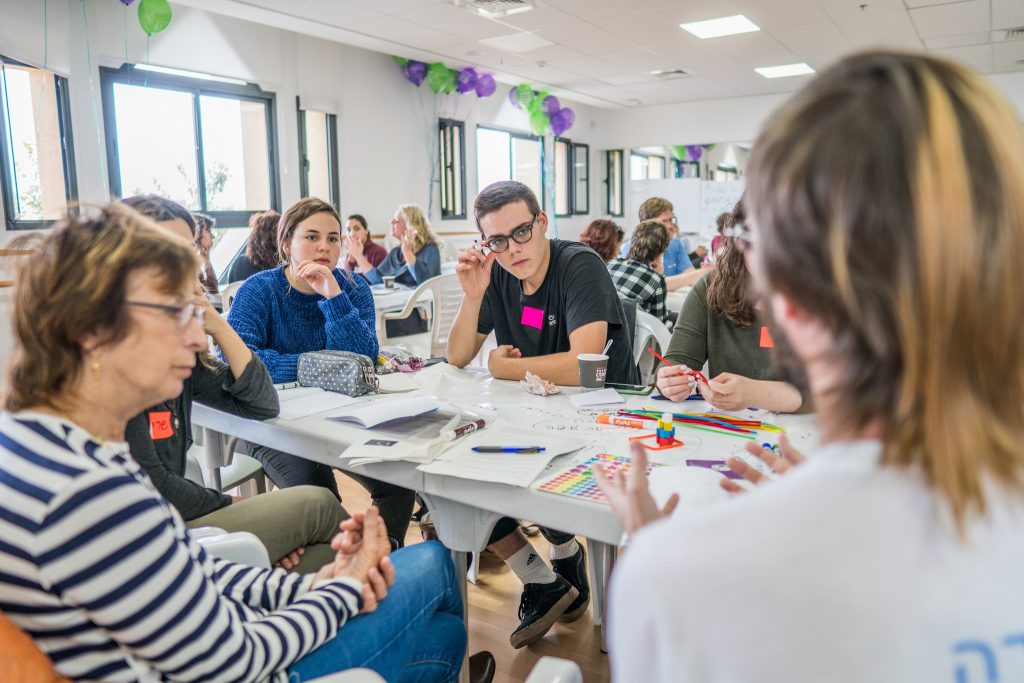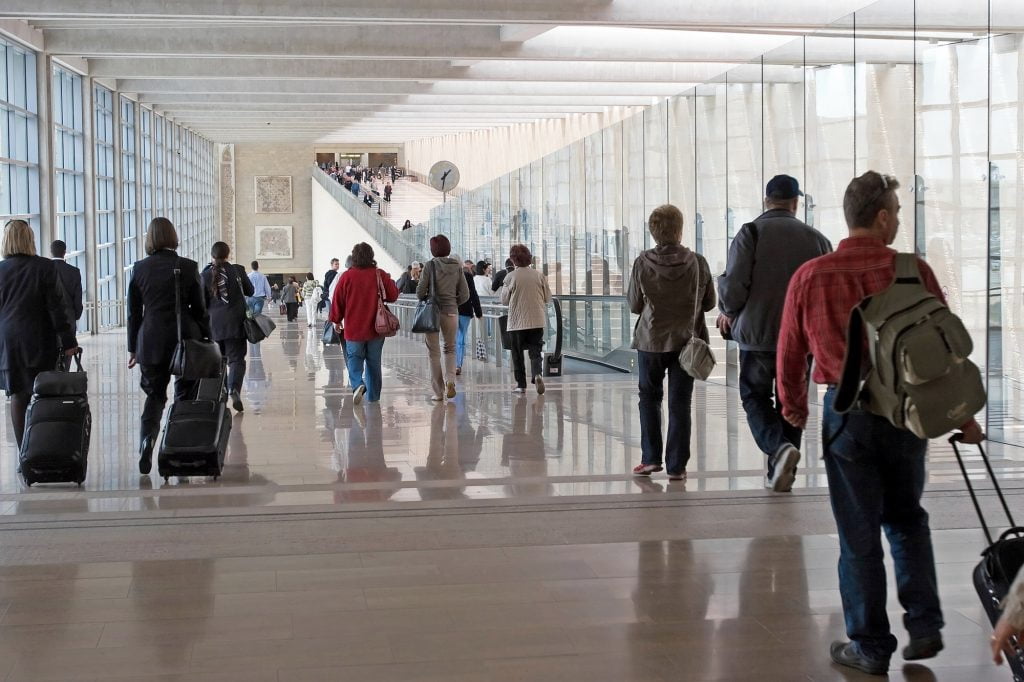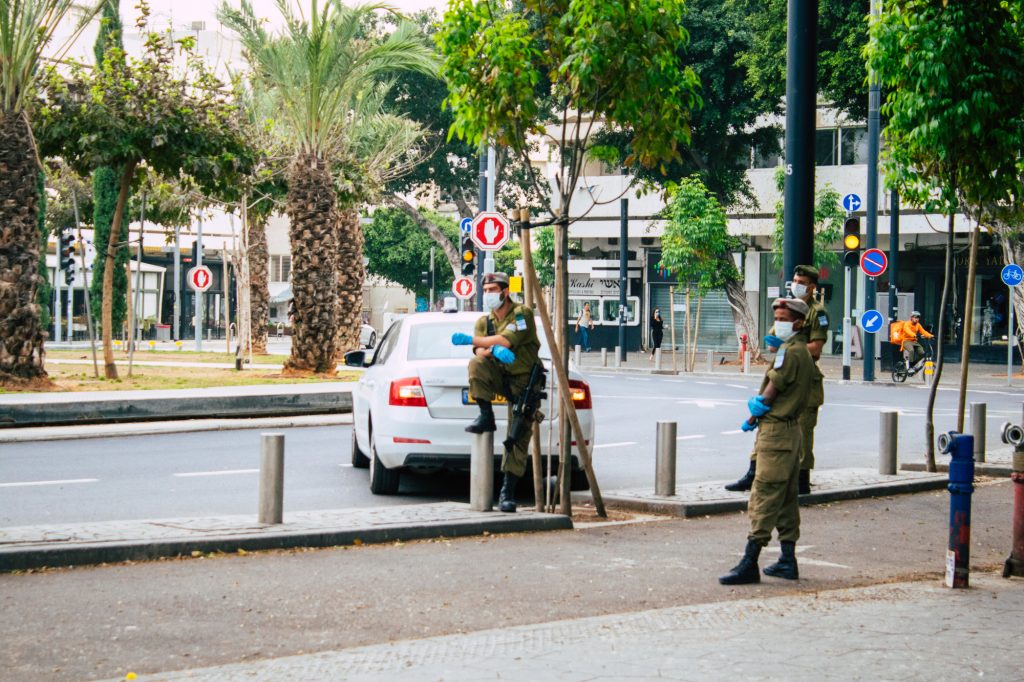After five weeks of national lockdown due to the coronavirus – at times partial and at times full – Israel is starting to think about how to emerge from the crisis and restart the economy which, like in other countries, has been dealt a hard blow. The country’s unemployment rate has climbed to over 25 percent in April, with over a million people out of work.
Prime Minister Benjamin Netanyahu has been indicating that some restrictions on work and movement will be eased after the Passover holiday ends this week. On Monday, the premier said in a statement that the government has formulated an economic plan that will hopefully allow “for a gradual and responsible exit from the economic lockdown of the corona[virus] crisis” and that a cabinet decision will be made later this week. He warned that the way out of the economic and health crisis will be gradual and slow and emphasized that Israelis will emerge into a different reality from that which they knew pre-coronavirus, at least until a vaccine is developed. This reality includes possible new outbreaks every now and again.
A number of “exit strategy” plans have already been touted, including one co-authored by Professor Amnon Shashua, the co-founder of Mobileye (now an Intel company), who is part of an advisory council to the prime minister on how to emerge from the lockdown. Late last month, Shashua and Shai Shalev-Shwartz, a computer science professor at the Hebrew University of Jerusalem and CTO of Mobileye, penned a piece that proposed an “exit strategy” based on dividing the population into high-risk and low-risk groups and quarantining the former.

SEE ALSO: Mobileye CEO: Coronavirus Exit Strategy Could End Crisis In Months
“Quarantine the high-risk and gradually release the low-risk population to achieve a managed herd immunity of that population,” they wrote. “The managed phase is designed to allow the health system to cope with the expected number of severe cases.”
Shalev-Shwartz told NoCamels that implementing the strategy could have the low-risk population getting back to normal immediately. “We estimate that herd immunity will be developed in about a month. Once it will happen, the ‘high-risk’ population [anyone aged 67 or older] can also get back to normal,” he said.
Shashua and Shalev-Shwartz appeared before the Knesset Special Committee on Dealing With the Coronavirus earlier this month to discuss their plan and said it was met with a positive response.
Scientists at the Weizmann Institute of Science have proposed an exit strategy that relies on an intermittent lockdown to avoid economic collapse. “A weekly cycle of 2 workdays and 5 lockdown days can provide a good tradeoff between minimizing health impact and maximizing economic activity,” wrote Professor Uri Alon, a systems biologist, with students Omer Karin and Yael Korem, and Boaz Dudovich from Applied Materials, in an article on Medium.
Their strategy is specifically for countries that have enacted a continuous lockdown, and have reached a point where this approach has succeeded in stabilizing the number of critical cases to a point that the health system can cope. A cycle of two days out and five days in, or one of four workdays and 10 lockdown days can keep the infection load low while allowing sustainable, albeit reduced, economic activity, as well as preventing a resurgence of the pathogen.

They emphasize that “workdays” will still require physical distancing, face masks, and strict hygiene and may include the “entire population except for quarantined infected individuals and people in risk groups who may be in quarantine.”
“The basic idea is to reduce the infectivity, R, defined as the average number of people infected by each infected individual, below 1,” they wrote. A scientific pre-print of their model was made available online.
A third proposed exit strategy, by Bar-Ilan University researchers, involves splitting the population into two groups that alternate between lockdown and routine activity in weekly succession. The researchers, led by Dr. Baruch Barzel of the Department of Mathematics, argue that the “invisible spreaders” – those who are asymptomatic – are the main contributors to the proliferating case count and by alternating a lockdown, socio-economic activity can be sustained at a 50 percent level.
“Consider an individual who became infected during their active week. They are now in their pre-symptomatic period – the most dangerous stage, in which they are invisible spreaders. The crucial point is that, according to the alternating lockdown routine they are now scheduled to enter their lockdown phase” explained Dr. Barzel in a university statement. “Staying at home for another week, they will most likely begin to exhibit symptoms, and therefore remain in isolation until full recovery. Indeed, if following a week of lockdown they show no symptoms, they are most likely uninfected and can partake in social and professional activities during their active week.”
“Therefore, alternating lockdown with full isolation of symptomatic spreaders ensures that at all times, the majority of invisible spreaders are inactive, as their incubation period is naturally directed towards their lockdown phase,” he added.
This model also allows for a fraction of non-cooperation from “defectors,” who may continue to be active during their lockdown phase.
“We can achieve more if we also adopt responsible behavior. Specifically, we expect that even during their active week, people will continue to interact with caution: avoid physical contact, increase personal space and practice hygienic behavior. These additional measures, when coupled with our alternating lockdown strategy, can help inhibit the spread, allowing us to overcome COVID-19 with reasonable economic consequences,” Dr. Barzel said.
Meanwhile, a prominent mathematician and former military general stirred controversy this week when he argued that Israel may already be in the final stages of the pandemic and suggested the restrictive measures be lifted as soon as next week, slamming them as “mass hysteria.”
Professor Isaac Ben-Israel, chairman of the Israeli Space Agency and the National Council for Research and Development, and head of the Security Studies program at Tel Aviv University, said in an interview on Israeli television on Monday that according to an analysis (in Hebrew) conducted with a fellow professor at the Technion, the rate of additional coronavirus patients is declining and may reach zero in the next few weeks. He argued that the coronavirus spread follows a pattern where the rate of infections grows over four to six weeks after which there is moderation until the eighth week and then the virus disappears. He said this happens in countries that have taken similar steps to Israel, like Italy, and those that have not, like Taiwan and Singapore.
Sign up for our free weekly newsletter
Subscribe“It’s clear to us how the epidemic is starting and what is causing the increase. What is causing the moderation is unclear. Therefore, I propose that we end the closures immediately after the current week. We will start increasing the workforce from 15 percent to fifty percent and in two weeks we will reach 100 percent,” Professor Ben-Israel said.
While Ben-Israel said he supports social distancing and wearing face masks, he added that given the stats, the shuttering of the economy and the ensuing damage was unwarranted. Israel, he said, “shouldn’t be closing down the entire country when most of the population is not at high risk.”
Israel has had over 12,500 confirmed cases of coronavirus with more than 2,500 recoveries and 130 deaths, according to Health Ministry figures as of April 15. Of those with a confirmed diagnosis, 180 are in serious condition and 130 require ventilation. According to health authorities, a majority of those who have died of the disease in Israel have been elderly people with pre-existing conditions.
Speaking on the same panel on the TV segment on Monday, Professor Gabi Barbash, a hospital director and a former Health Ministry director-general, said Ben-Israel was sorely mistaken and that Israelis will be “living with the coronavirus for the next year.”
“I strongly urge that we not let mathematicians — who know nothing about biology — determine when we lift the lockdown,” added Barbash.
Israel’s National Security Council has an ‘exit’ plan
Netanyahu has faced increased pressure to begin lifting the restrictive measures. In an open letter this week, Israeli business leaders urged the prime minister to ease the lockdown as soon as possible or face devastating economic consequences.
The Israeli ministries of finance and defense have also been pushing to remove the limitations but have met resistance from the Health Ministry.
In a statement on Wednesday, Israeli Defense Minister Naftali Bennett said Israel should reopen major sectors of the national economy as well as some of the education system. “Continuing the closure at its current level or a slightly reduced one will cause critical harm to Israel and its citizens,” he warned.
The cabinet is set to meet in the coming days to discuss a way out of this crisis.
One such strategy, proposed by Israel’s National Security Council (NSC) looks at a four-phase plan that will see the tech, finance, and trade industries resume operations first, along with some public transportation. The education system will also restart slowly with special education programs and preschools allowed to resume activities. Public offices supporting these sectors will be allowed to open, and public sector activity will expand to 50 percent in the first phase.

In the next stage, elementary-ages children will go back to school and the commerce and retail industries, with the exception of large shopping malls, will be allowed to resume activity.
In the third phase, cafes, restaurants, and hotels will be allowed to re-open and will be required to implement strict hygiene and physical distance measures. Most other pupils in the education system will be allowed to return to school, except in high-risk cases. As for universities, the plan advises that campuses stay closed for the rest of the academic year and continue with online learning.
In the fourth phase, shopping malls, theaters, cinemas, and cultural centers will be allowed to reopen, sports events may take place, and most travel flights may resume.

According to the National Security Council’s plan, the phases will be rolled out with a two-week gap between each of them, with the last phase carrier out when the pandemic is “‘under full control’ and in line with how the rest of the world manages to curb the spread of the virus,” according to Haaretz.
The council estimates that should everything go according to plan, this strategy may take about two months but is likely to carry into the summer months.
Persons over 60 will not be allowed to resume normal activities in any of the four phases, according to the NSC plan.
Related posts

Israeli Medical Technologies That Could Change The World

Rehabilitation Nation: Israeli Innovation On Road To Healing





Facebook comments